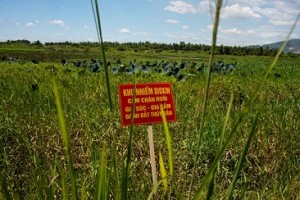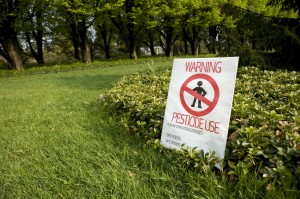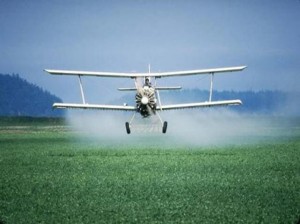27
Aug
Research Shows Weeds Growing Resistant to 2,4-D
(Beyond Pesticides, August 27, 2012) A report published recently in the journal Weed Science has found that a population of the common weed waterhemp in Nebraska is resistant to the herbicide 2,4-D. The news comes as the U.S. Department of Agriculture (USDA) considers approving several new crops that have been genetically engineered (GE) for resistance to the herbicide. The report presents the latest in a long line of evidence that crops engineered for herbicide resistance are only pushing the problems of weed management further down the road.
Researchers from the University of Nebraska found that half of the waterhemp samples they collected from a Nebraska field, after having been treated regularly for 10 years with 2,4-D,were no longer susceptible to applications of the herbicide. The experiments performed are described by Reuters:
“After 10 years of treatment with 2,4-D, waterhemp was no longer effectively controlled in a Nebraska native-grass seed production field, the report said. The highest doses of 2,4-D that were used in an on-site field study were insufficient to control 50 percent of the waterhemp population. Researchers gathered waterhemp seeds from this field and performed greenhouse testing against a susceptible waterhemp variety. Twenty-eight days after treatment with the herbicide, visual observation and dry weight values showed a 10-fold resistance in the affected sample.”
These findings illustrate the failure of GE crops to effectively manage weeds over the long term. Engineering resistance to an herbicide, even multiple herbicides, will only lead to an increase in pesticide applications, and the resulting natural evolutionary process of weed populations growing resistant to the treatment. When the first herbicide resistant crops were introduced, engineered to resist glyphosate in the form of Monsanto’s Roundup products, they were touted as being a safer alternative to more toxic chemicals such as 2,4-D. However, intensive spraying of glyphosate has led to a serious rise in resistant weed populations, making farmers and agro-chemical corporations look to other, older chemicals, such as 2,4-D, to solve the problem. It was only a matter of time before weeds started to evolve resistance to these chemicals as well.
2,4-D has been used in the U.S. since the 1940s, and as such is one of the oldest registered herbicides in the country. It made up roughly half of the herbicide known as Agent Orange, which was used to defoliate forests and croplands in the Vietnam War. According to EPA, 2,4-D is currently found in approximately 600 products registered for agricultural, residential, industrial, and aquatic uses. 2,4-D is a chlorophenoxy herbicide, and scientists around the world have reported increased cancer risks in association with its use, especially for soft tissue sarcoma and non-Hodgkin’s lymphoma. Research by EPA suggests that babies born in counties with high rates of chlorophenoxy herbicides application to farm fields are significantly more likely to be born with birth defects of the respiratory and circulatory systems, as well as defects of the musculoskeletal system like clubfoot, fused digits, and extra digits. These birth defects were 60% to 90% more likely in counties with higher 2,4-D application rates. The results also show a higher likelihood of birth defects in babies conceived in the spring, when herbicide application rates peak.
Farmers do not have to remain stuck on a pesticide treadmill that demands ever greater amounts of synthetic inputs, including GE seeds, and rewards chemical suppliers at the expense of farm profitability and the environment. Organic agriculture is an ecologically-based management system that prioritizes cultural, biological, and mechanical production practices, and natural inputs. By strengthening on-farm resources, such as soil fertility, pasture and biodiversity, organic farmers can minimize and even avoid the production challenges that most genetically engineered organisms have been falsely-marketed as solving.
Source: Reuters
All unattributed positions and opinions in this piece are those of Beyond Pesticides.


















